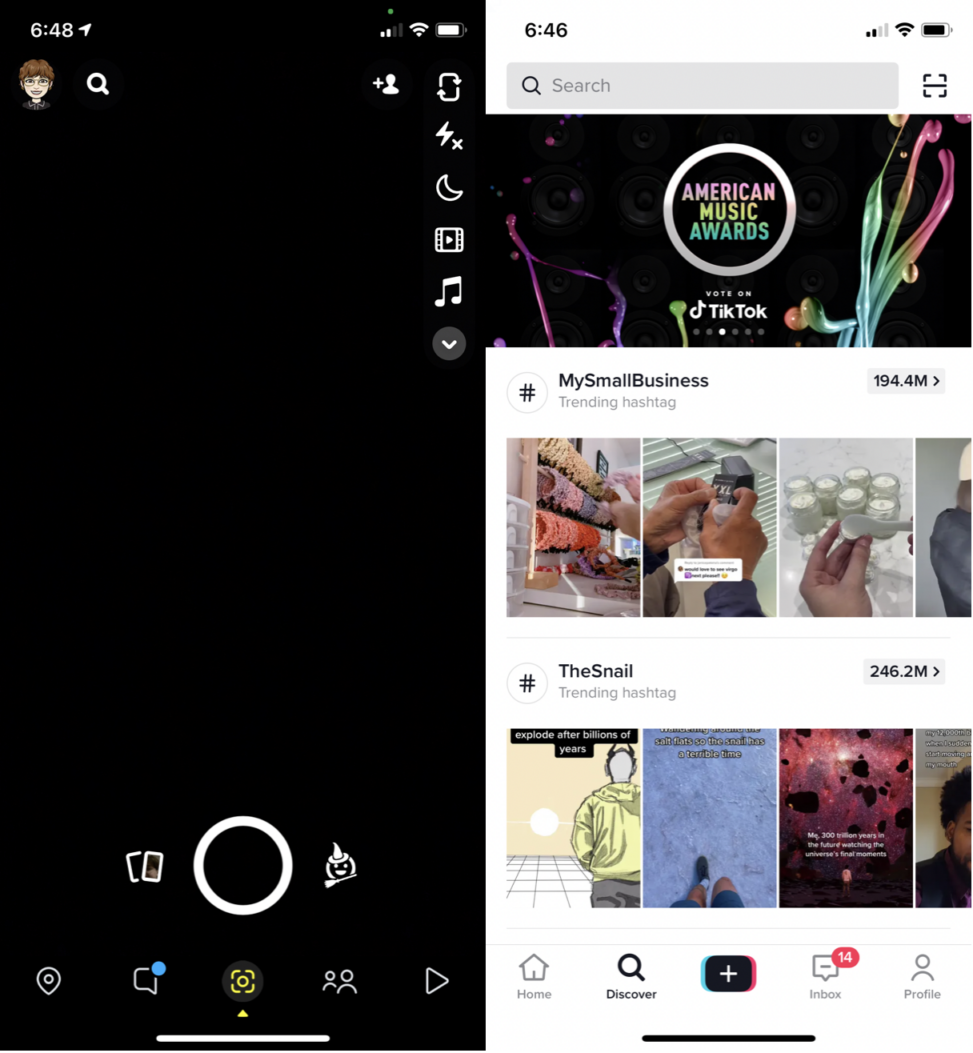Image Attribution: “Assignment 3, Part A – Social Networking Sites” by Nicole Favron is licensed under CC0. (See interactive map)
VISA 1500 – Introduction to Visual Culture
Created By: Nicole Favron
Created For: Terryl Atkins
Part A: Social Networking Sites Critique
The two social networking sites that I use most often are Snapchat and Tiktok. I tend to use Snapchat more so for interpersonal communication, and Tiktok is used for entertainment in my case. Each app has a twenty-minute daily limit on it, set by me, to restrict my daily consumption of media. For Snapchat, I often stay within this daily limit. As for Tiktok, I often find myself extending the limit; this often happens late at night, and often more than a few times. Before I know it, I have been on the app for two hours. For around three days, I took inventory of my time on both apps. Within the three days, I did not create or alter any content. I am not one to post very often on my Snapchat story, and I rarely create any content on Tiktok, so these three days of cataloguing proved to be average for myself. What I did accomplish was a large amount of consumption. For each of the three days, I spent around and hour and a half on Tiktok late in the evening, and for Snapchat, I reached my twenty-minute limit on the first and second day, but did not open the app on the third day. Many use Snapchat because it “…is different from other networks in that it has an inherently ephemeral nature, whereby any messages are automatically deleted shortly after the receiver has viewed them, allowing an increased experience of perceived privacy and safety online.” (Kuss and Griffiths 3) I definitely agree that the ephemeral nature of this social networking site is what initially drew me to it, but the reason I have kept the app for so long is because of the memories it does save. When you save your content on Snapchat, it catalogues and dates them, and will notify you when you have memories from years ago. This is my favourite aspect of the app. I enjoy Tiktok for quite different reasons. For me Tiktok, is where I go to relax. I appreciate the anonymity of Tiktok, and that it allows me “to use social media to peek into other people’s lives” (qtd. in Omar and Dequan125). For me, it is more relaxing to watch a stranger’s content as opposed to people I know in real life. This allows me to fully disconnect and appreciate the content I am seeing, and I a freed of the responsibility I may feel toward those I know in day-to-day life.
My relationship with social media is something that I try to carefully monitor. Most of my apps have daily limits, and I try to not be on my devices until after I have had breakfast in the mornings. My main goal is to ensure that “…the activity—while excessive—does not result in significant detriment to…” my life (Kuss and Griffiths 5). These are new goals that I have implemented in the last few years and I have been able to significantly reduce my screen-time with these tactics. I plan to continue finding ways to reduce my screen-time as much as I can, as this allows me to live a more grounded lifestyle.
Works Cited
Kuss, Daria, and Mark Griffiths. “Social Networking Sites and Addiction: Ten Lessons Learned.” International Journal of Environmental Research and Public Health, vol. 14, no. 3, 2017, p. 311., https://doi.org/10.3390/ijerph14030311.
Omar, Bahiyah, and Wang Dequan. “Watch, Share or Create: The Influence of Personality Traits and User Motivation on TikTok Mobile Video Usage.” International Journal of Interactive Mobile Technologies (IJIM), https://online-journals.org/index.php/i-jim/article/view/12429.
